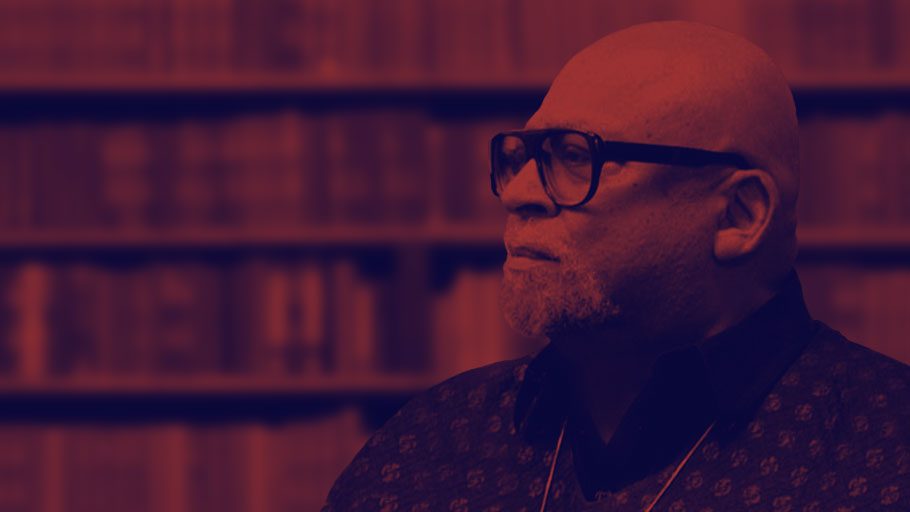As we engage the 2024 ASALH Black History Theme: “African Americans and the Arts”, it is important to approach it as a celebration, invitation and opportunity to remember and reflect on the essential and enduring role art has played in our lives and struggle to be ourselves and free ourselves as persons and a people. Moreover, this art as creative practice and production is expressed in a wide range of fields and forums including the visual and performing arts, writing, communal narratives (story-telling), architecture, fashion and film, quilting and cooking, music and movement of varied kinds, all enriching and expanding our lives and looming large across the world as a powerful and impressive presence.
Given the existing context of continuing struggle, in engaging the theme’s emphasis on art for this Black History Month, I want to focus on its role as a practice of centering, freedom and resistance. And I want to do this drawing from our history, the history of our art and discourse on art, so central to it, some essential elements that informed and shaped the concept and practice of the/a Black aesthetic. In defining and discussing the Black aesthetic, I want to retrieve an interpretation that I contributed during the Black Arts Movement through my philosophy Kawaida and the discourse surrounding the concept and practice. My essential ideas were offered in my essay, “Black Art: Mute Matter Given Force and Function”, and expanded elsewhere in varies contexts and venues.
Essentially, I argued that in the context of the revolutionary and liberation struggle we were in, art had a critical role to play, but it had to have a conception of itself that facilitated and encouraged the role. I made then and make here the important point that a Black aesthetic is both a standard of artistic excellence and of social relevance. And whatever evidences of technical and delivery excellence art demonstrates, given the context of our time, the artist must ask what does his/her art have to say about and do with the life and liberation struggle of our people. Also, I argued that art had to be functional – useful to the life and liberation of our people; collective – deeply rooted in and drawn from the people in various ways; and committing – cultivating and sustaining a self-affirming consciousness, a heightened sense of potential and possibility and victory in their life and liberation struggle and in their ability to be victorious and forge a future of enduring and inclusive good and beauty. Clearly, I, responding to the context and demands of the time for our people, a people in ongoing oppression and righteous and relentless resistance.
Now, when I talk of art as a practice of centering, freedom and resistance, it is important to note that these practices are inseparable and interrelated, reinforce each other and form an integral whole. For its first and foremost about art in service of the people, in the service of their personhood, peoplehood and humanity. It is about, as Hortense Spillers states, art and artists providing “a site of significant intervention” in the lives and struggles of the people.
Clearly, one of the clearest and most cogent affirmations of this role is given by Nana Elizabeth Catlett, speaking of her practice of art and the responsibility of centering, freedom and resistance that accompany it. She states, “We have to create an art of life and liberation”. And she stresses it must be liberating and uplifting in the image and interests of our people. Thus, she says of her practice of the art of life and liberation, “I have always wanted my art to serve my people, to reflect us, to relate to us, to stimulate us, to make us aware of our potential”.
To center oneself as an artist is to ground yourself in the culture of your people, in the best of what it means to be African and human in the world. It means using this ancient and ongoing way of our life and living, of feeling, imaging and self-assertion in the world as an anchor and opening to ever new possibilities of creativity of life and liberation. It is to realize and reaffirm with Nana August Wilson his emphasis on the need to realize the self-sufficiency of our culture and capacity to create good, progress, excellence and possibility. He calls it standing on the sacred and self-defining ground of our honored ancestors, who were “warriors on the cultural battle field” in the battle to protect and preserve their culture and humanity, reclaim their freedom and bring good in the world. It is, he asserts, being confident in understanding and asserting “there is no idea that cannot be contained by Black life” and thus to audaciously emulate the ancestors, “men and women (who) found themselves to be sufficient and secure in their art and their instruction”.
Now, the task of freedom is the dual and simultaneous task of practicing freedom in your art, liberated from the gaze and guidelines of the oppressor and others who want you to move beyond yourself and the fertile ground of your culture and community. It is a fundamental Kawaida contention that “Black artists can find no better subject than Black people themselves” and they are clearly impoverished in any alienation or move from them. Thus, Nana James Baldwin reminds us that if the artist is to be grounded and “continue to grow, he/she must remain in touch with himself (herself) and the community”. And he notes that there will be many, especially from the dominant society who will try in various ways to alienate Black artists from this vital source of support and cultural grounding, but they must resist. “For if the artist is “effectively removed, he (she) falls silent and the people have lost another hope”.
Also, pushing against this constant threat of losing the vital talent and contribution of artists to the community and struggle, Nana bell hooks, speaks to resisting the forces of alienation, appropriation and destruction of Black lives and culture rooted in a global system of oppression. She urges us not to be alienated and separated from the sense of ourselves as creatively capable, beautiful and constantly becoming. For she argues, if the imperialist, colonialist, racist and other oppressors “could make a people lose touch with their capacity to create, lose sight of their will and their power to make art, then the work of subjugation, of colonization is complete”. And she assures us that this “work can only be undone by acts of concrete reclamation”, which essentially means reclaiming ourselves and centering ourselves, reclaiming our history and humanity, our freedom and the right and capacity to frame and forge our own self-determined future.
Here we must recognize and respond creatively to the reality that as Nana Paul Robinson taught, “the battlefront is everywhere. There is no sheltered rear” and to Nana Malcolm’s teaching that in the context of oppression, “wherever a Black person is there is a battle line”. Indeed, in the context of oppression, the artist must constantly bear witness to truth and act on the evidence of truth sought and discovered. In other words, artists are to translate in social practice the witness they bear in art. This is the essential meaning of Nana Sekou Toure’s teaching that the artist and intellectual must recognize “there is no place outside the struggle” for liberation, that “to take part in the African revolution, it is not enough to write a revolutionary song”. The task is to “fashion the revolution with the people (and) the songs will come by themselves and of themselves”.
In the context of oppression censorship and the coercive quest for comfort and silence at the expense of the oppressed, Baldwin tells us the artist must become and be “the incorrigible disturber the peace”. He says, “It really gets to the place where political and artistic responsibilities meet” and it is here that artists must join their people in the struggle for liberation and ever higher levels of human life resulting in continuing and expanding African and human good and the well-being of the world and all in it.















